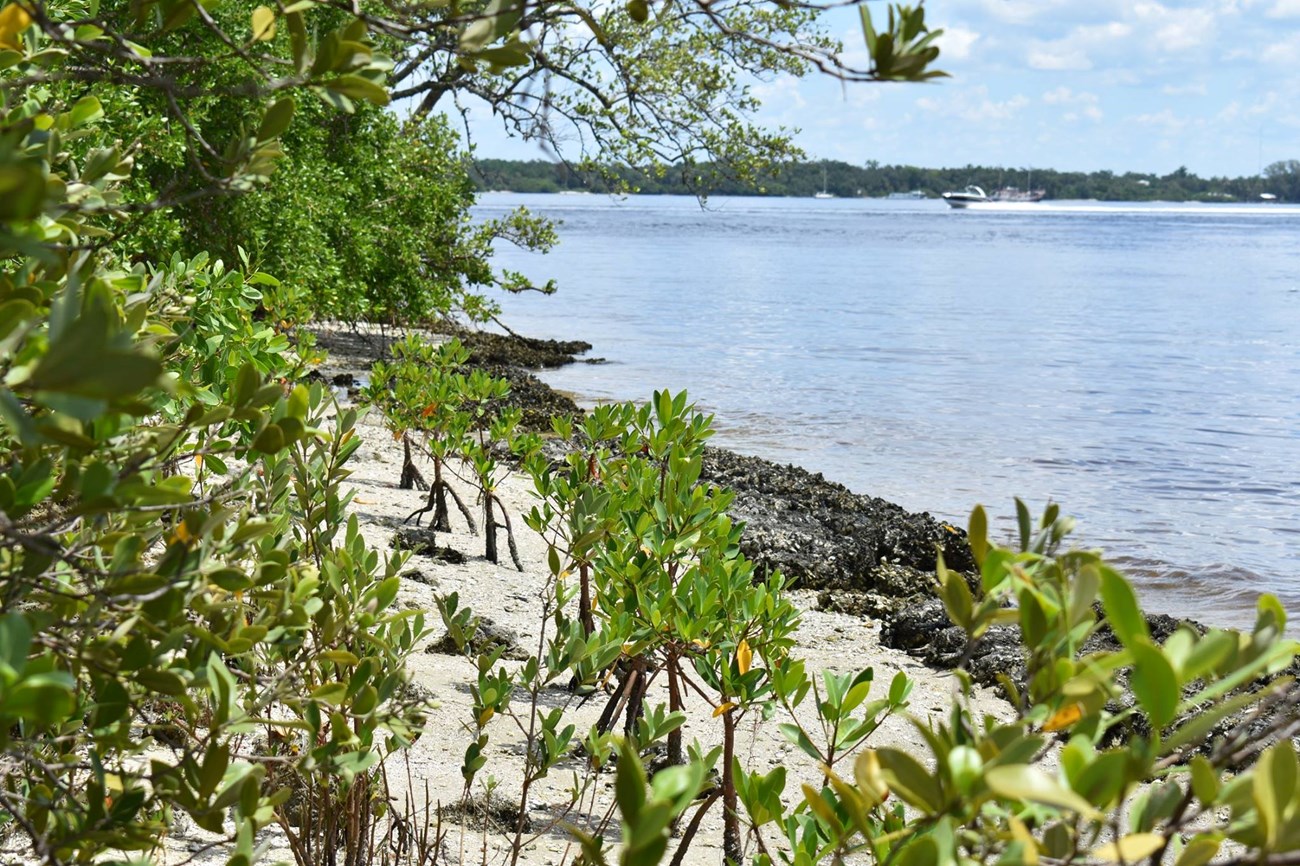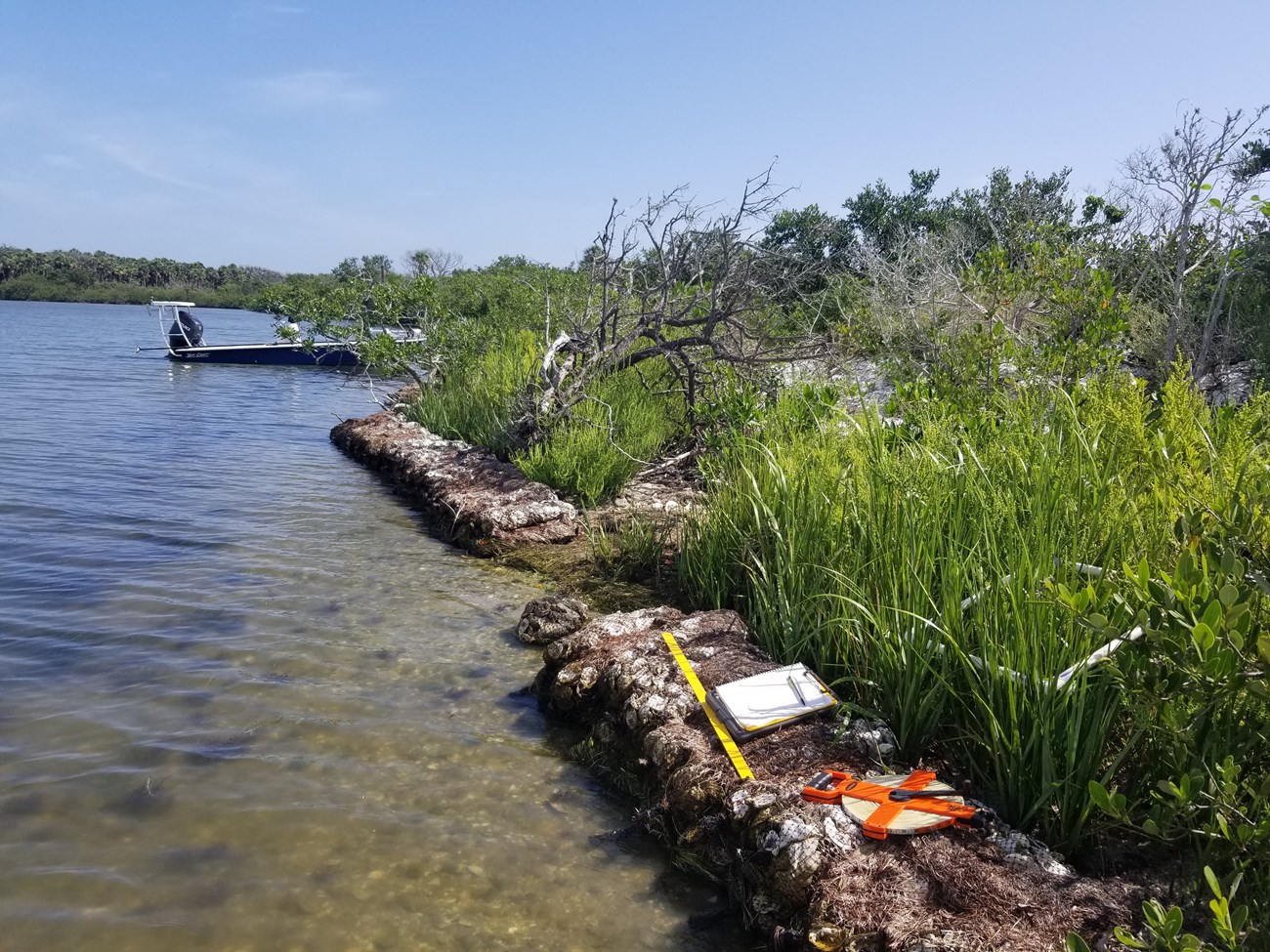Last updated: April 5, 2019
Article
Coastal Engineering—Natural and Nature-based Features
Natural and nature-based features can be incorporated into shoreline protection along with other built features or hybrids of these feature types.
Natural features are generated through biological, chemical, physical, and geologic processes of nature and include dunes, marshes, mangrove forests, and oyster reefs. These natural features provide important ecosystem services of wave attenuation, reducing shoreline erosion, and increasing shoreline protection, making them a valuable resource for mitigating coastal vulnerability. Parks depend on such resources to provide natural resilience against coastal flooding and sea level rise.

Photo by Linda Walters.
Nature-based structures may mimic natural features of a shoreline to provide specific services such as protection and dissipation of wave energy along a vulnerable coast, but are human-made. Often, these techniques incorporate native vegetation or seagrass beds in the development of living shorelines. A living shoreline maintains continuity of the natural land–water interface while reducing erosion and increasing habitat (NOAA, 2015). Living shorelines are best suited to low wave energy environments and are increasingly encouraged as a way to protect estuarine habitats instead of hard-structure armoring. Vegetation survival may be limited by seasonal dependence, vulnerability to invasive species, or uprooting by storms, and periodic maintenance is necessary for long-term success. Although living shorelines can provide wave buffering to upland areas during normal conditions, they are not intended to protect against storm surge water levels.

Photo by Linda Walters.
Nature-based hybrid techniques are typically used in areas with medium to high wave energy and incorporate hard structures such as rock edging, sills, or breakwaters in conjunction with living shorelines and vegetation. Planted sea grass may help stabilize sediment at the toe of a hard structure and hold a slope in place, or dissipate wave energy that would otherwise weaken the structure. Although these hybrid features can be more effective at reducing erosion, the hardened component will disrupt sediment processes and much of the benefits as alternatives to traditional armoring are lost. Upkeep of the living shoreline is required to assure the living components do not damage the hard structure and plans should be in place to remove the hard structure in the event the living shoreline fails.
Hybrid structures and the incorporation of living shorelines in design is an active field of research taken on by state and federal government, academic institutions, NGO’s, and private sector agencies alike. The NPS has successfully implemented mangroves, saltmarsh grass, and oyster mats in combination with soft engineering techniques to strengthen, protect, and stabilize eroding historical sites at Canaveral National Seashore, Florida. This project can serve as a model to other coastal parks with similar management challenges as with the NOAA Guidance for Considering the Use of Living Shorelines.
Related Links
- Canaveral National Seashore, Florida—[Geodiversity Atlas] [Park Home]
- De Soto National Memorial, Florida—[Park Home]
- Systems Approach to Geomorphic Engineering (SAGE) by NOAA and USACE
- NOAA Fisheries Office of Habitat Conservation: Guidance for Considering the Use of Living Shorelines
- Coastal Adaptation Case Study: Shell Mound Sites Threatened by Sea Level Rise and Erosion
- Coastal Adaptation Strategies Handbook & Case Studies
